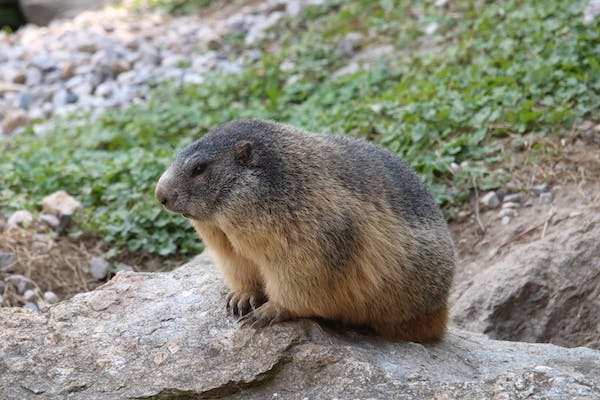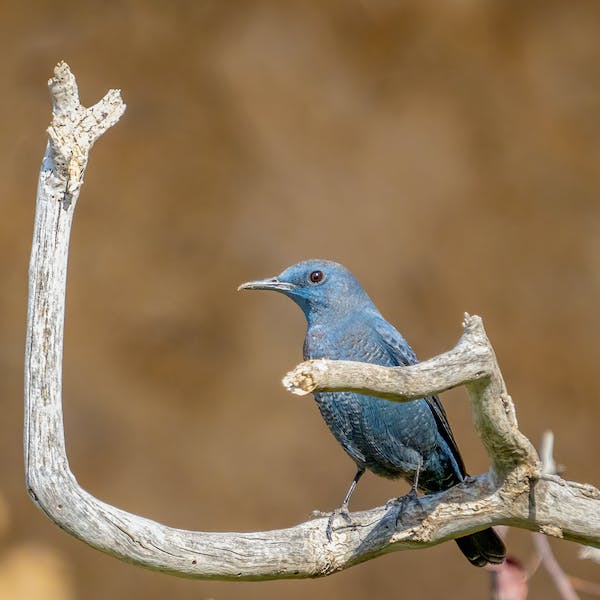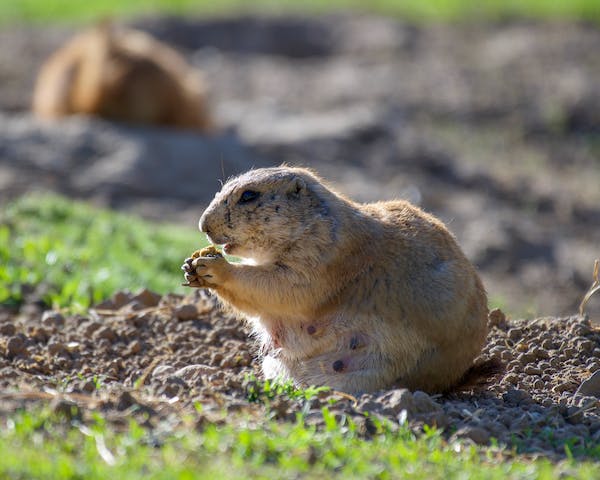WILDLIFE
Capitol Reef Country is full of interesting and beautiful wildlife both inside and outside Capitol Reef National Park. This area offers great birdwatching wetlands and endless backcountry animal siting opportunities.
BLACK BILLED MAGPIE
The magpie is a common bird throughout Wayne County. It is recognized by its large size, long tail and black and white coloration. The magpie is loud, social and very smart. They have one partner and usually stay in one general area.

BLACK BEARS
Yes, we have bear in Capitol Reef Country! Black bears can be found in 41 states in the U.S. They are shy and in most cases avoid contact with humans. Accidental encounters are possible, and usually occur in heavily forested areas or near water sources. Please remember to keep a clean camp and secure your food and trash. If you are lucky enough to see one of these beautiful and powerful creatures do not approach it. Back away. Make lots of noise and do not surprise it. If you feel threatened, hold your ground, yell, scream, or throw rocks. A black bear is one of nature’s great animals and deserves a great deal of respect.
KANGAROO RAT
Most people think these desert rodents are cute. These rats have a plump, dumpy little body with large hind legs, large eyes, and small hairless rounded ears. They are pale in color. There is usually a white band of fur that crosses the hips from the base of the tail. The normal overall length of a kangaroo rat averages 9-14 inches. They have a long tail that acts as a balance when the animal is making long hops. The tracks of a hopping animal show only the marks of the hind feet and the tail. The rats come out only at night when it is cool, and when there is a minimum amount of evaporation. The primary food for these rodents is seeds – mesquite, creosote bush, purslane, ocotillo, and grama grass

MARMOT
Marmots are the largest ground-dwelling squirrels in the region and are brown to yellowish brown with yellowish bellies. They have heavy bodies with short legs, small ears, and bushy tails. Marmots range in weight from 5 to 10 pounds and measure one to two feet in length, with a five to seven inch tail. In April and May, the females give birth to three to six naked and blind young in grass-lined dens. Their habitats vary from talus slopes to pastures with large boulders. These burrowing animals sometimes spend as much as eight months of the year underground and begin hibernation as early as September. When danger encroaches, the marmots let out high-pitched chirps so the group can scurry to safety. These mammals are also referred to as “whistle pigs.”

PINYON JAY
While you are out exploring the area, you may encounter the Pinyon Jay. This bird is 9-11” long, with all gray-blue plumage, a long slender bill, and no crest on its head. It is a social bird both friendly and loud. These birds search mainly for pinyon or pine nuts and seeds, as well
as insects and berries. Pinyon jays build bulky nests of sticks, twigs, and fibers in pinyons, junipers, and shrubs. These birds do not establish pair bonds until their third year, but afterward the pairs remain together year-round.

PORCUPINES
Porcupines are gray brown, with chunky bodies, high arching backs, and short legs. Yellowish hair covers their long quills all over their backs, rumps, and tails. These rodents are approximately two feet in length, with an 8” tail, and weigh between 10-28 pounds. Next to the beaver, they are the largest rodent in Utah. Porcupines are active year-round. Porcupines eat green plants, grass, and leaves in summer and tree bark in the winter. They are slow moving animals with poor eyesight, yet they are equipped with thousands of barbed quills for protection against predators. Contrary to popular belief, porcupines do not throw their quills; quills are released from the porcupine’s body and penetrate the attacker’s skin.
PRONGHORN ANTELOPE
When you travel the wide open country of the sagebrush plains or down in the desert of the San Rafael, keep your eyes peeled for the pronghorn antelope. These deer sized animals have the distinct markings of antelope from the African Savannah. It is often said that a pronghorn does not look like it belongs here. Males and females both can have horns, but the male horns curve back and grow quite large. Pronghorns can be seen in small herds or by themselves. When this animal senses danger it can go from a dead stop to 50 mph in a flash. The pronghorn antelope is the fastest animal in the Western Hemisphere.
UTAH PRARIE DOGS
The Utah Prairie Dog is fawn colored, sprinkled with black on the back and sides with white bellies and small ears. They can be seen spring to fall at higher elevations in Wayne County, on the Aquarius Plateau. As you hike or drive by, look for the obvious mounds around the burrow. Sit and wait quietly for five minutes and you may see him stick his head up! The Utah Prairie Dog is endangered and is protected by federal law.

BICKNELL BOTTOMS WILDLIFE REFUGE
Looking for a quiet place to do a little bird-watching? Head to Bicknell Bottoms, where 670 acres of wetlands meets open waters and surrounding farmlands for one of the best natural marshes—and birding sites—in Utah. This Wildlife Management Area (WMA) is a great place for waterfowl and bird watching, hunting, and trout fishing along the Fremont River and Pine Creek.
Bicknell Bottoms Wildlife Refuge is easily accessible from Scenic Byway 24.
Bicknell Bottoms was once the site of Red Lake, a shallow bed now filled with silt, reeds, hardstem bulrush, saltgrass and cattails. Shallow open waters provide an excellent home for waterfowl and upland game birds. On a regular basis, this marshy habitat is home to the Great Egret, Northern Harrier, Southwestern Willow Flycatcher, Northern Mockingbird, Blue-winged Teal, marsh wren, puddle ducks, geese and a variety of other waterfowl.


